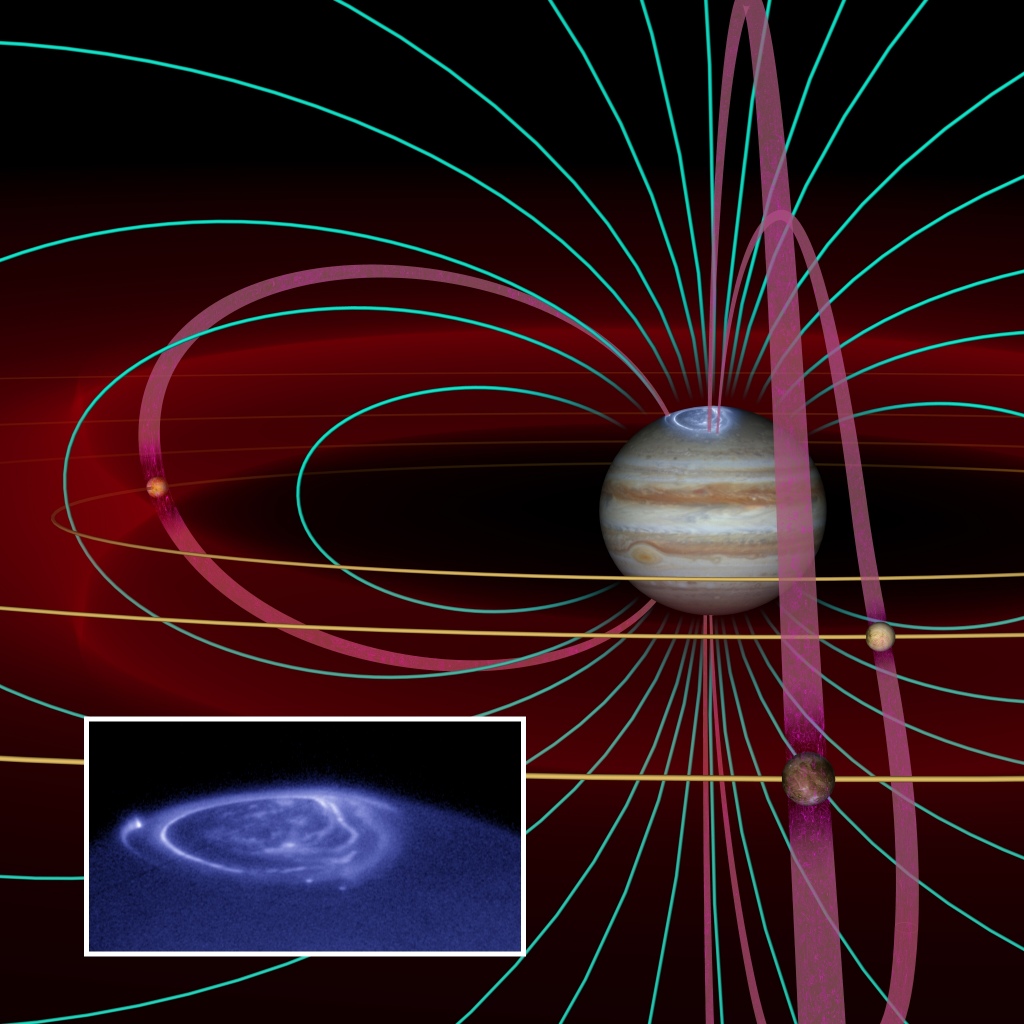Auroral ‘Footprints’

| Language |
|
|---|
A drawing illustrates how flows of electrons steered by Jupiter's magnetic field connect three of Jupiter's large moons with the upper atmosphere near Jupiter's north and south poles.
The currents stimulate ultraviolet aurora glows in Jupiter's upper atmosphere. Observations with NASA's Hubble Space Telescope, coordinated with the late 2000 flyby of Jupiter by NASA's Cassini spacecraft, captured those auroral footprints for the moons Io (left), Europa (right) and Ganymede (center).
In the illustration, Jupiter's magnetic field lines are presented in blue, the moons' orbital paths around Jupiter in yellow. Pink loops from each of the moons to Jupiter's poles depict the flux tubes that are the paths of powerful electric currents.
The Space Telescope Science Institute, Baltimore, Md., manages space operations for Hubble for NASA's Office of Space Science, Washington, D.C. The institute is operated by the Association of Universities for Research in Astronomy, Inc., for NASA, under contract with the Goddard Space Flight Center, Greenbelt, Md. The Hubble Space Telescope is a project of international cooperation between NASA and the European Space Agency. Cassini is a cooperative project of NASA, the European Space Agency and the Italian Space Agency. The Jet Propulsion Laboratory, a division of the California Institute of Technology in Pasadena, manages the Cassini mission for NASA's Office of Space Science.
Credit: NASA/John Spencer, Lowell Observatory and John Clarke, Boston University
More information about the Cassini and Galileo joint observations of the Jupiter system is available online at:
Cassini is a cooperative project of NASA, the European Space Agency and the Italian Space Agency. The Jet Propulsion Laboratory, a division of the California Institute of Technology in Pasadena, manages the Galileo and Cassini missions for NASA's Office of Space Science, Washington, D.C.
